The living room is often the heart of the home, where family and friends gather to relax, entertain, and spend quality time together. One of the key elements in creating a comfortable and functional living room is the placement of the sofa. The sofa serves as the centerpiece of the space, providing a cozy and inviting seating area for both everyday use and special occasions. But with so many options and considerations, determining the best placement for your sofa can be a daunting task.
When it comes to placing your sofa for optimal functionality in your living room, several factors come into play. It’s not just about finding a spot that looks aesthetically pleasing; it’s about creating a layout that promotes ease of movement, encourages social interaction, maximizes natural light, and complements the overall design of the room. By carefully considering these factors, you can find the perfect spot for your sofa that strikes a balance between functionality and style.
In this comprehensive guide, we will explore the various aspects to consider when determining where to place your sofa for the best functionality in your living room. We will delve into topics such as multi-functional spaces, upholstery and fabric considerations, conversation areas, natural light, assessing the space, focal points, traffic flow, balance and symmetry, and more. Each aspect will be examined in detail, providing you with practical insights and tips to help you make informed decisions about sofa placement.
Whether you have a small apartment or a spacious living room, this guide will assist you in optimizing your sofa placement to create a comfortable, functional, and visually appealing living room. We will address common questions and concerns, offer expert advice, and provide inspiring ideas to help you make the most of your space.
So, if you’re ready to transform your living room and unlock the full potential of your sofa, let’s dive into the world of sofa placement and discover the best strategies to enhance the functionality and beauty of your living room.
In This Post:
Assessing the Space: Understanding Your Room’s Layout
Focal Point: Positioning the Sofa for Visual Impact
Traffic Flow: Ensuring Easy Movement
Balance and Symmetry: Creating Harmonious Arrangements
Natural Light: Maximizing the Benefits
Conversation Areas: Promoting Social Interaction
Multi-Functional Space: Adapting to Different Needs
Upholstery and Fabric Considerations: Practicality and Style
Is It OK To Place a Sofa in the Middle of the Living Room?
Where Should a Couch Be in a Living Room with a Window
Do Sofas Need to Be Against a Wall?
What to Do if You Cannot Get the Ideal Sofa Position?
How About a Sectional: Best Placement
Conclusion
FAQs
Assessing the Space: Understanding Your Room’s Layout
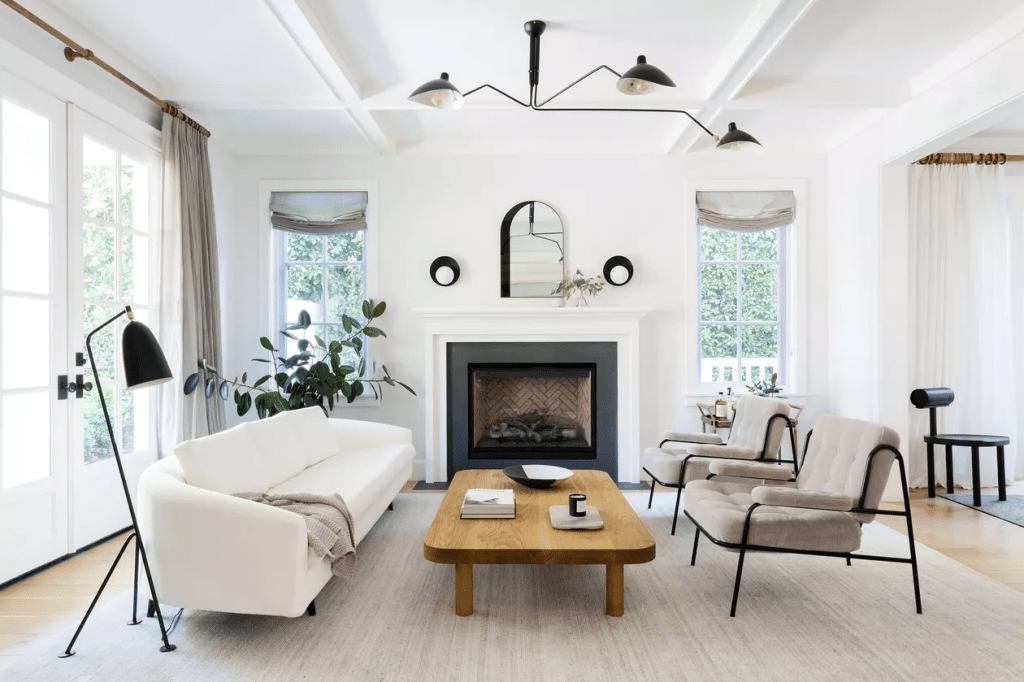
Before determining the ideal placement for your sofa, it’s crucial to assess the space and gain a clear understanding of your room’s layout. This step will help you make informed decisions about where to position your sofa for maximum functionality and visual appeal.
Start by measuring the dimensions of your living room, including the length, width, and height. Understanding the size of the space will give you a better idea of how different furniture arrangements can fit within the room. Take note of any architectural features, such as windows, doors, or alcoves, as they can impact the placement of your sofa.
Next, consider the traffic flow within the room. Observe how people naturally move through the space and identify any high-traffic areas. It’s important to ensure that the placement of your sofa doesn’t obstruct the natural pathways or create obstacles that hinder movement. Leaving enough space for easy navigation contributes to a functional and comfortable living room layout.
Take note of any existing furniture or fixtures that are already in the room. Determine whether you want to incorporate them into your new sofa placement or if you have the flexibility to rearrange them. Consider how the existing elements will interact with the sofa and how their placement can complement or impact the overall layout of the room.
Additionally, think about the focal points or focal areas in the room. These could be architectural features like a fireplace, a large window with a scenic view, or a media wall. Positioning your sofa to face or align with these focal points can create a visually appealing arrangement that draws attention and makes the space more inviting.
Finally, consider the overall style and atmosphere you want to achieve in your living room. Do you prefer a cozy, intimate setting or a more open and spacious feel? Understanding your desired ambiance will guide your decisions when it comes to sofa placement and furniture arrangement.
By thoroughly assessing the space, understanding its layout, and considering the traffic flow, existing furniture, focal points, and desired atmosphere, you’ll be equipped with the knowledge needed to find the perfect spot for your sofa. This thoughtful approach ensures that the placement not only maximizes the functionality of your living room but also creates a visually pleasing and harmonious environment.
Focal Point: Positioning the Sofa for Visual Impact
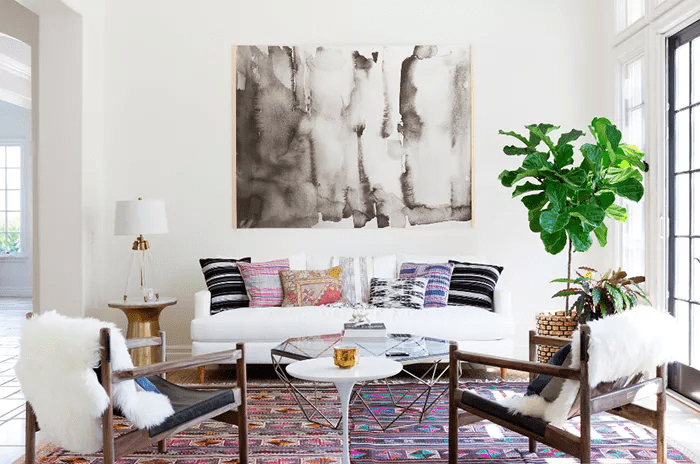
In any living room, it’s essential to create a focal point that captures attention and sets the tone for the space. When determining where to place your sofa, consider how it can contribute to the overall visual impact of the room by aligning with or complementing the focal point.
A focal point can be a variety of elements, such as a fireplace, a large piece of artwork, a feature wall, or a stunning view through a window. By positioning your sofa in a way that emphasizes or aligns with the focal point, you create a harmonious and visually appealing arrangement.
If your living room has a fireplace, consider placing the sofa in a way that faces it or is perpendicular to it. This arrangement not only allows you to enjoy the warmth and coziness of the fire but also draws attention to this architectural feature. You can further enhance the impact by incorporating a coffee table or accent chairs around the sofa to create a cozy seating area that embraces the focal point.
In the case of a large piece of artwork or a feature wall, position your sofa in a way that showcases and complements the artwork or wall design. Center the sofa directly across from the artwork or wall, allowing it to become a focal point in its own right. This creates a visually striking arrangement that adds depth and interest to the room.
If your living room offers a scenic view through a window, consider placing the sofa in a way that allows you to enjoy the view. Positioning the sofa to face the window or angling it to provide an optimal view not only maximizes the visual impact but also connects the indoor and outdoor spaces, creating a seamless and inviting atmosphere.
By strategically placing your sofa in relation to the focal point, you can create a captivating and visually impactful living room. This arrangement draws attention, enhances the overall aesthetics, and creates a cohesive design that leaves a lasting impression on anyone entering the space.
“If you are looking for a way to style your space with wall art without breaking your piggy bank, then I recommend reading “10 Surprising Benefits of Printable Wall Art”
Traffic Flow: Ensuring Easy Movement
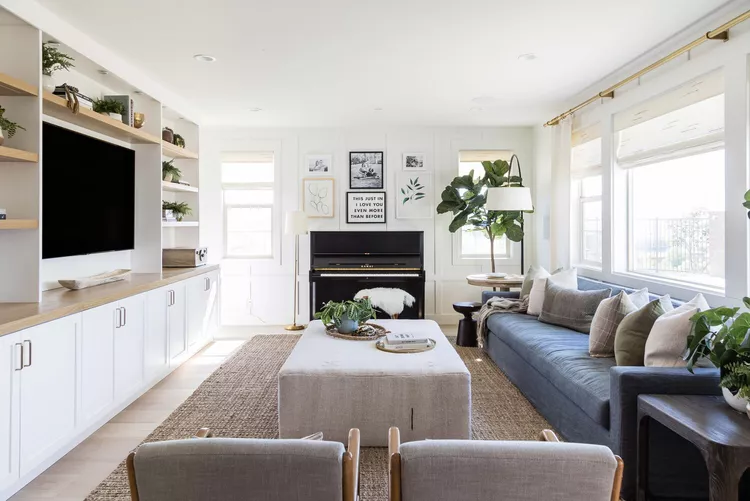
When placing your sofa in the living room, it’s crucial to consider the traffic flow and ensure that there is easy movement throughout the space. A well-designed layout that allows for seamless navigation enhances the functionality and comfort of the room.
Observe the natural pathways and how people typically move within the room. Take note of the main entrances, exits, and common walkways. Avoid placing the sofa in a way that obstructs these pathways or creates obstacles that make it difficult to move around.
Ensure that there is enough space between the sofa and other furniture or walls to allow for comfortable and unobstructed movement. Leave at least 18 inches of clearance, but adjust the measurement based on the size of your room and the overall furniture arrangement. This provides a clear path for people to walk without feeling cramped or restricted.
Consider the placement of other key elements in the room, such as coffee tables, side tables, and accent chairs. These should also be arranged in a way that doesn’t impede the traffic flow. If necessary, rearrange or adjust the placement of these items to create a more open and accessible living room layout.
In addition, if you have multiple entry points or doors in the living room, make sure the sofa placement doesn’t block any of these access points. Easy access to the room from different directions allows for a smooth flow of movement and ensures that the space is easily accessible for both residents and guests.
By carefully considering the traffic flow in your living room and placing the sofa in a way that allows for easy movement, you create a more functional and user-friendly space. The arrangement should facilitate seamless navigation and make it effortless for people to move around and engage in various activities within the room.
Balance and Symmetry: Creating Harmonious Arrangements
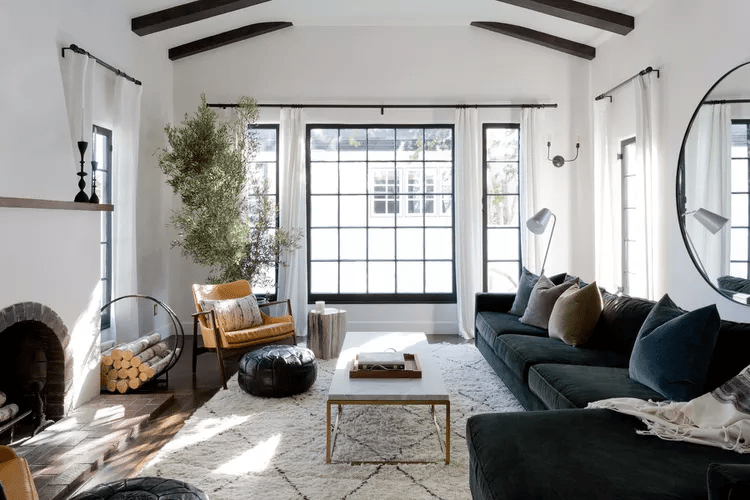
Creating a balanced and symmetrical arrangement in your living room not only promotes visual harmony but also enhances the overall functionality of the space. When deciding where to place your sofa, consider how it can contribute to a well-balanced and symmetrical layout.
Symmetry can be achieved by positioning the sofa in the center of the room or along a central axis. This creates a sense of equilibrium and stability, making the space visually pleasing and comfortable. Placing side tables, lamps, or other furniture items on either side of the sofa can further enhance the symmetrical arrangement.
Balance can also be achieved through the size and proportion of furniture. If you have a large sofa, balance it out by incorporating other substantial pieces of furniture, such as a media console or a bookshelf, on the opposite side of the room. On the other hand, if you have a smaller sofa, consider pairing it with armchairs or accent chairs to create a well-proportioned and balanced seating arrangement.
Furthermore, the use of color and pattern can contribute to a sense of balance and symmetry. If your sofa has a bold pattern or a vibrant color, consider incorporating similar elements on the opposite side of the room to create visual harmony. This can be achieved through artwork, throw pillows, or other decorative items that mirror or complement the colors and patterns of the sofa.
Remember that balance and symmetry don’t necessarily mean that everything has to be perfectly identical. It’s about creating a visual equilibrium and distributing the visual weight of the furniture and decor elements in a pleasing manner. Play with different arrangements and experiment with furniture placement until you achieve a sense of balance that feels right for your living room.
By incorporating balance and symmetry into your living room arrangement, you create a visually pleasing and harmonious space. The carefully placed sofa serves as a key element in achieving this balance, allowing for a well-proportioned and symmetrical layout. This arrangement not only enhances the aesthetic appeal but also contributes to a more comfortable and functional living room.
Natural Light: Maximizing the Benefits
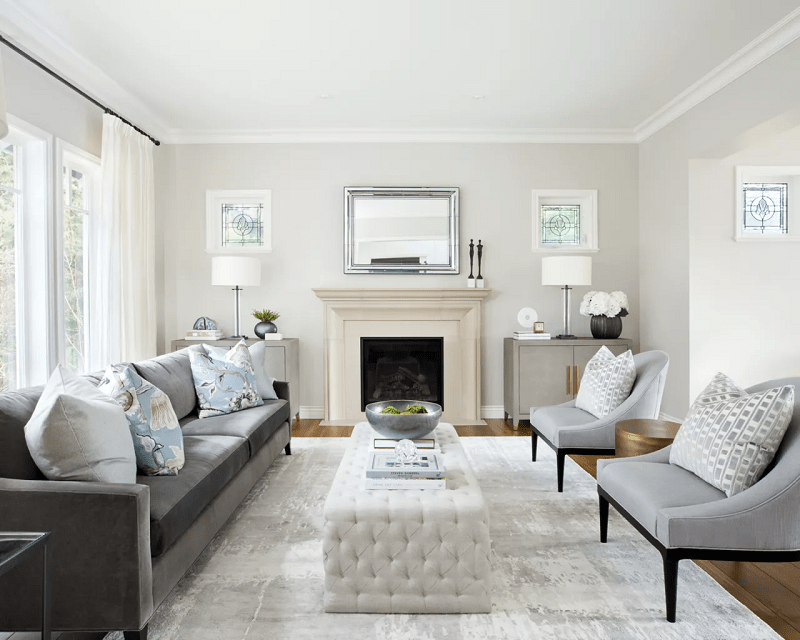
Utilizing natural light can significantly enhance the ambiance of your living room. When deciding where to place your sofa, consider positioning it near windows or glass doors to take full advantage of the benefits of natural light. This not only brightens up the space but also creates a warm and inviting atmosphere.
Natural light has a positive effect on our mood and well-being. It creates a sense of openness and brings a refreshing energy to the room. By placing your sofa strategically to receive the most light, you can create a cozy and enjoyable area for relaxation, reading, or simply basking in the sunlight.
When considering the placement of your sofa in relation to natural light, keep a few factors in mind. First, consider the direction of the sunlight throughout the day. If you have windows on multiple walls, observe how the light enters the room at different times. Position your sofa in a way that allows you to make the most of the sunlight without causing uncomfortable glare or excessive heat.
If you have large windows or glass doors, placing your sofa adjacent to them can offer beautiful views and create a seamless connection between the indoors and outdoors. This can be particularly beneficial if you have a garden or scenic landscape outside. Not only will you enjoy the natural light, but you’ll also have a pleasant backdrop to enjoy while lounging on your sofa.
To maximize the benefits of natural light, consider the use of window treatments. Sheer curtains or blinds can filter the light and provide privacy without completely blocking it out. This allows you to control the amount of light entering the room while still enjoying the connection to the outdoors.
In addition to the placement of your sofa, consider how the other elements in the room can contribute to the natural light experience. Light-colored walls, mirrors, and reflective surfaces can help bounce the light around the room, creating a brighter and more spacious feel. By strategically arranging these elements, you can amplify the effects of natural light and make your living room feel even more inviting.
By harnessing the power of natural light and positioning your sofa to take full advantage of it, you can create a bright, airy, and uplifting living room. The warmth and natural glow of sunlight will enhance the overall ambiance of the space, making it a pleasant and rejuvenating area for relaxation and spending time with loved ones.
Conversation Areas: Promoting Social Interaction
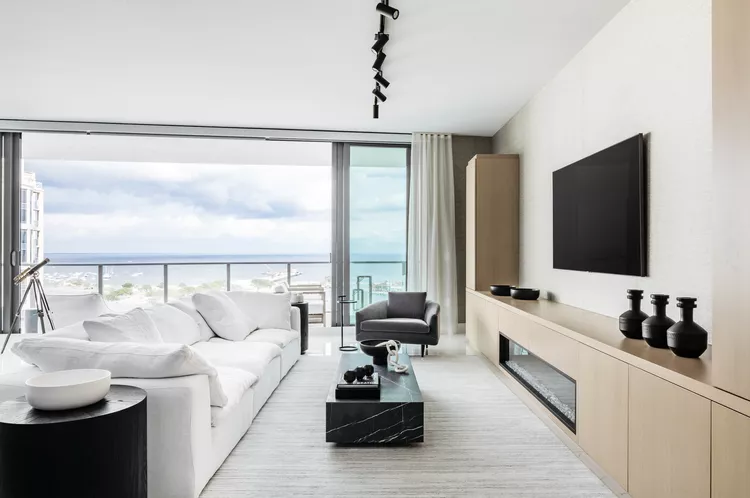
If you frequently host gatherings or enjoy engaging in conversations with family and friends, creating conversation areas in your living room is essential. The placement of your sofa can greatly influence social interaction within the space and enhance the overall functionality of your living room.
When considering the placement of your sofa for conversation areas, think about creating an arrangement that encourages face-to-face interaction. Position the sofa in a way that allows people to comfortably sit and converse with each other. Placing chairs or loveseats across from the sofa can create a cozy and inviting setting that promotes social engagement.
Consider the size and layout of your living room when determining the number of seats to include in the conversation area. You want to ensure that there is enough space for everyone to sit comfortably and easily participate in the conversation. Avoid overcrowding the area with too much furniture, as this can make the space feel cramped and hinder social interaction.
If you have a large living room, you can create multiple conversation areas by strategically placing sofas and chairs in different sections of the room. This allows for smaller, intimate conversations to take place simultaneously, accommodating various groups of guests and ensuring that everyone feels included.
In addition to furniture placement, consider the arrangement of other elements in the conversation area. A coffee table or side tables near the seating can provide a convenient surface for placing drinks, snacks, or books, fostering a relaxed and inviting atmosphere. By incorporating soft lighting, such as floor lamps or table lamps, you can create a warm and cozy ambiance that encourages conversation and relaxation.
Remember, the goal of conversation areas is to facilitate social interaction and make guests feel comfortable and engaged. By thoughtfully placing your sofa and other seating options, you can create a welcoming environment that promotes meaningful conversations and enjoyable gatherings in your living room.
Multi-Functional Space: Adapting to Different Needs
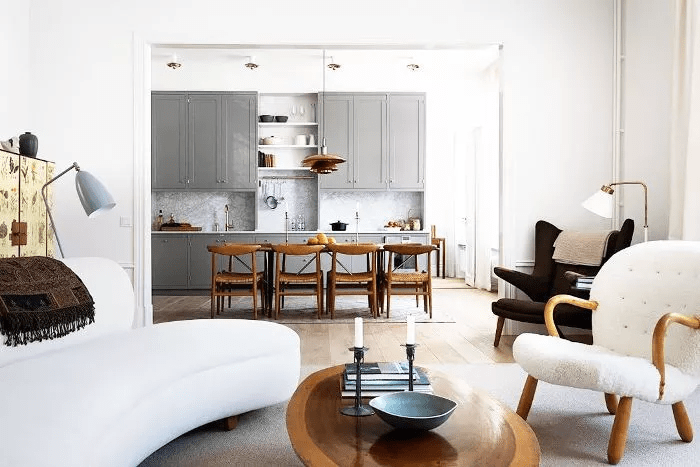
In modern homes, living rooms often serve multiple purposes. Gone are the days when a living room was solely reserved for receiving guests. Today, it has become a versatile space that caters to various needs and activities. When it comes to placing your sofa, it’s important to consider how you can create a multi-functional area that adapts to different requirements.
Think about the different activities that take place in your living room. Perhaps you use the space as an entertainment zone, where you gather with your family to watch movies or play video games. In this case, positioning the sofa near the television or media center would be ideal. Ensure that the viewing angle is comfortable and that there is enough space for additional seating or multimedia equipment.
On the other hand, if you work from home or need a dedicated space for reading and studying, consider incorporating a small desk or bookshelf near the sofa. This allows you to create a cozy reading nook or home office area within your living room. By placing your sofa strategically in relation to these functional elements, you can optimize the usability of the space and make it more practical for your day-to-day activities.
Furthermore, if you have children or pets, it’s essential to consider their needs when determining the placement of your sofa. Creating a designated play area within the living room can be achieved by positioning the sofa in a way that leaves ample space for toys, play mats, or activity stations. This ensures that your little ones have a safe and engaging environment while still allowing you to keep an eye on them from the comfort of your sofa.
By embracing the concept of multi-functionality, you can transform your living room into a dynamic space that caters to various needs and preferences. The key is to think about the activities you want to accommodate and plan the placement of your sofa accordingly. By doing so, you’ll create a versatile and adaptable environment that enhances the functionality of your living room.
Upholstery and Fabric Considerations: Practicality and Style
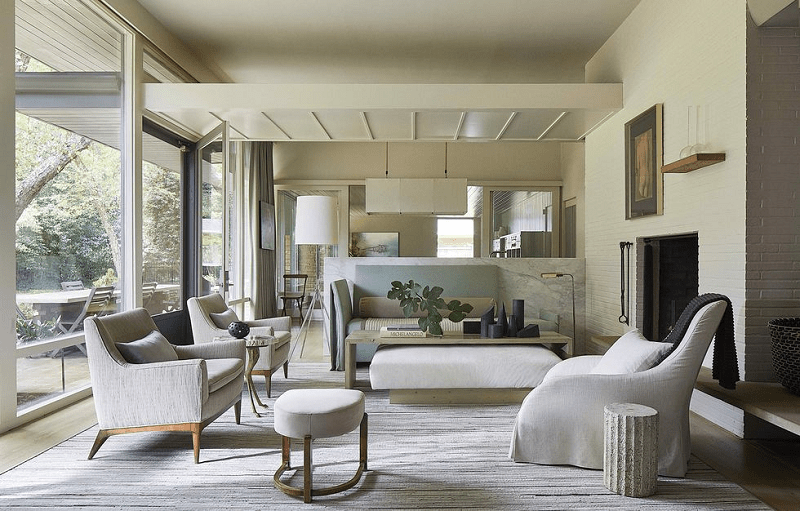
While the placement of your sofa greatly impacts its functionality, it’s equally important to consider the practicality and style of the upholstery and fabric. Choosing the right upholstery not only enhances the visual appeal of your sofa but also determines its durability and ease of maintenance.
When selecting upholstery, consider your lifestyle and the specific needs of your household. If you have young children or pets, opt for fabrics that are stain-resistant and easy to clean, such as microfiber or leather. These materials can withstand spills and accidents, making them a practical choice for busy households.
Additionally, think about the overall style and color scheme of your living room. Your sofa should complement the existing décor and contribute to the desired aesthetic. If you prefer a classic and timeless look, neutral colors like beige, gray, or navy are versatile options that can easily blend with different design elements. On the other hand, if you want to add a pop of color or make a bold statement, consider vibrant hues or patterned fabrics to create a focal point in the room.
Moreover, consider the texture of the upholstery. Different fabrics offer different tactile experiences, and choosing one that matches your preferences can enhance the comfort and coziness of your sofa. Whether you prefer a smooth leather surface, a soft velvet touch, or a textured woven fabric, selecting the right upholstery texture adds depth and character to your living room.
It’s worth noting that while style and aesthetics are important, practicality should not be overlooked. A beautifully designed sofa won’t be as enjoyable if it’s difficult to clean or maintain. Ensure that the upholstery you choose is durable and can withstand everyday use. Look for high-quality materials and consider the manufacturer’s recommendations for care and cleaning.
By carefully considering the upholstery and fabric options for your sofa, you can strike the perfect balance between practicality and style. Remember to prioritize your lifestyle and the needs of your household, while also incorporating your personal taste and the overall design scheme of your living room. The right upholstery choice will not only enhance the functionality and longevity of your sofa but also contribute to the overall aesthetic appeal of your living space.
Is It OK To Place a Sofa in the Middle of the Living Room?
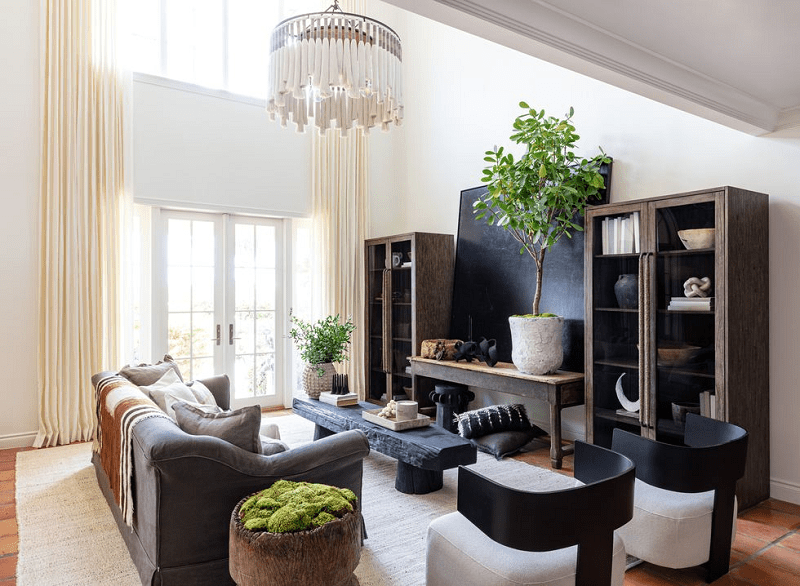
When it comes to placing your sofa in the living room, the question of whether to position it in the middle of the room or against a wall often arises. The answer ultimately depends on the layout and size of your living room, as well as your personal preferences and the desired functionality of the space.
Placing the sofa in the middle of the room can create a central focal point and a sense of balance. It can serve as a divider between different functional areas within the living room, such as a seating area and a dining area. This arrangement works well in larger rooms with ample space, allowing you to showcase the sofa and create a visually striking arrangement.
However, in smaller living rooms or rooms with limited space, placing the sofa against a wall may be a more practical option. This maximizes the available floor space and creates a cozy and intimate seating area. It can also help to open up the room and create a sense of flow, especially if you have other furniture pieces or elements that need to be accommodated within the space.
Consider the overall layout and flow of the room when deciding where to place your sofa. Think about the location of windows, doors, and architectural features, as well as the placement of other furniture items. You want to ensure that the sofa placement allows for easy movement and doesn’t obstruct the natural traffic flow within the room.
It’s worth noting that there are no hard and fast rules when it comes to sofa placement. The most important factor is to create a functional and visually pleasing arrangement that suits your lifestyle and preferences. Whether you choose to place your sofa in the middle of the room or against a wall, make sure it aligns with the overall design and purpose of your living room.
Ultimately, the decision of where to place your sofa should be based on a careful consideration of the room’s layout, size, functionality, and your personal preferences. Experiment with different arrangements and furniture placements to find the option that works best for your living room and creates the desired functionality and aesthetic appeal.
Where Should a Couch Be in a Living Room with a window?
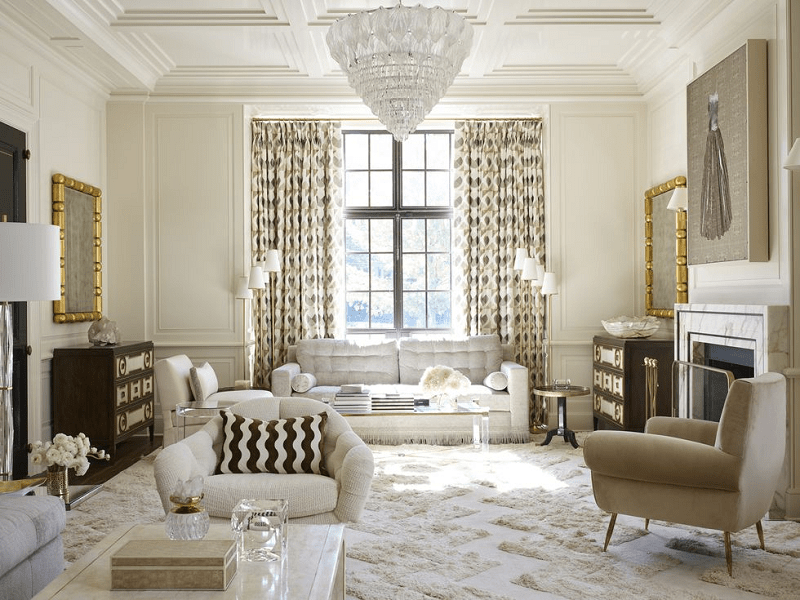
When you have a window in your living room, it can greatly influence the placement of your couch. The window serves as a valuable architectural feature that provides natural light and potentially offers scenic views. To make the most of these benefits, consider the following factors when deciding where to position your couch in a living room with a window.
- Facing the Window: Placing your couch facing the window can be an excellent choice. This arrangement allows you to enjoy the natural light and make the window a focal point of the room. You can take in the beautiful view while relaxing on your couch, creating a connection with the outdoors.
- Parallel to the Window: If your window is large or spans across one side of the room, positioning the couch parallel to the window can be an effective option. This allows you to maximize the view and still benefit from the natural light. It also creates a sense of openness and spaciousness.
- Angled Placement: Another option is to angle your couch to take advantage of both the window and other features in the room. By positioning the couch at an angle, you can enjoy the view while also creating a visually interesting arrangement. This approach can work well if you have multiple windows or if there are other focal points, such as a fireplace, that you want to incorporate into the seating area.
- Adjacent to the Window: If the window is on one side of the living room, you can place the couch adjacent to it. This allows you to still benefit from the natural light and have a view, while also creating a cozy and intimate seating area. You can consider adding a side table or floor lamp near the window to enhance the functionality of the space.
Consider the practical aspects as well when placing your couch near a window. Ensure that the couch is not obstructing the window or blocking any access to it. Also, be mindful of potential issues such as glare or excessive heat from direct sunlight. Utilizing window treatments like curtains or blinds can help regulate the amount of light entering the room while still allowing you to enjoy the view.
Ultimately, the placement of your couch in a living room with a window depends on the size and layout of the room, the specific features of the window, and your personal preferences. By strategically positioning your couch in relation to the window, you can create a comfortable and functional seating area that embraces the natural light and enhances the overall aesthetics of the room.
Do Sofas Need to Be Against a Wall?
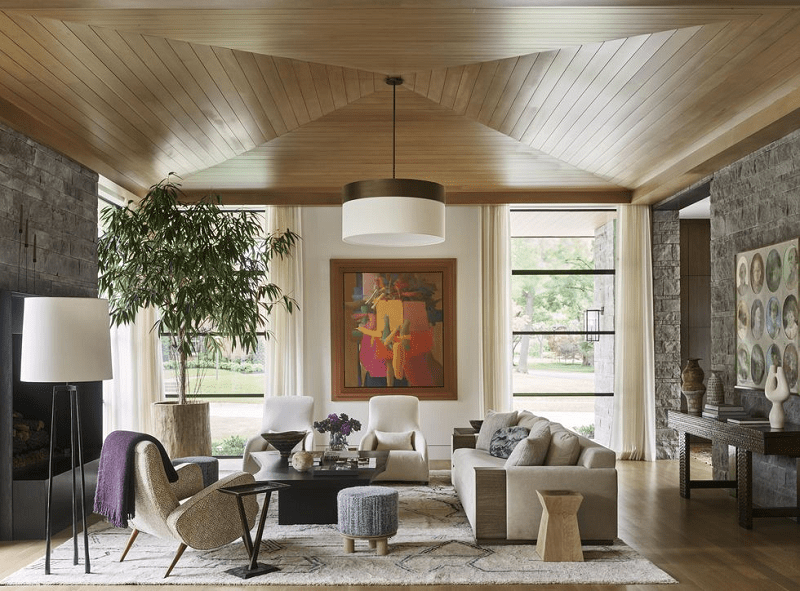
The traditional notion of placing sofas against a wall has been widely followed for many years. However, it’s important to note that sofas don’t necessarily need to be against a wall. The placement of your sofa should be based on various factors, including the layout of your living room, the size of the sofa, the desired functionality, and your personal preferences.
Placing a sofa against a wall can create a sense of stability and define the boundaries of a seating area. It can also help to open up the center of the room, allowing for easy movement and creating a more spacious feel. This arrangement works well in smaller living rooms or in cases where you have limited space.
However, there are situations where positioning a sofa away from the wall can be a viable and even preferable option. If you have a larger living room, placing the sofa away from the wall can create a more dynamic and visually interesting arrangement. It can serve as a focal point and allow for better circulation around the furniture. This arrangement can be particularly effective when you have multiple seating areas or when you want to create a more intimate and cozy atmosphere.
Additionally, placing the sofa away from the wall can provide flexibility in terms of furniture placement and room layout. It allows you to incorporate other furniture pieces, such as accent chairs or a coffee table, around the sofa, creating a more inviting and functional seating arrangement. It also gives you the opportunity to showcase the back of the sofa, which can be aesthetically pleasing if it has interesting details or decorative elements.
When deciding whether to place your sofa against a wall or away from it, consider the overall design aesthetic you want to achieve, the size and shape of your living room, and the desired functionality. Experiment with different arrangements and furniture placements to find the option that suits your space and lifestyle best.
Ultimately, the decision of whether a sofa needs to be against a wall depends on your personal preferences and the specific requirements of your living room. While there are benefits to both options, it’s important to choose a placement that creates a comfortable and visually appealing seating area that meets your needs and enhances the overall ambiance of your living room.
What to Do if You Cannot Get the Ideal Sofa Position?
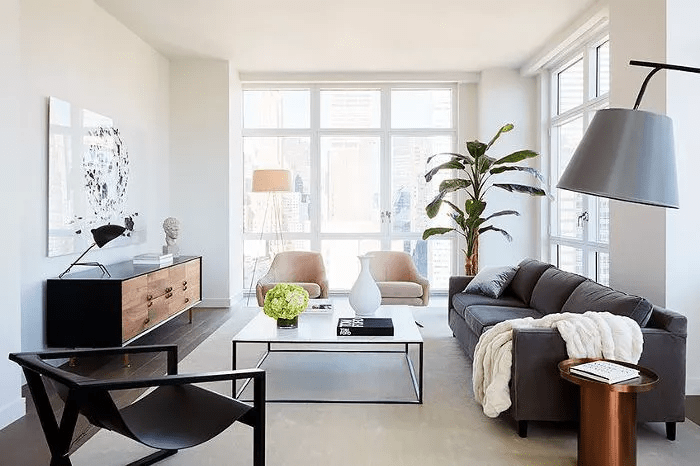
Sometimes, due to the limitations of your living room’s layout or other practical constraints, it may not be possible to achieve the ideal position for your sofa. However, there are still steps you can take to make the most of the available space and create a functional and visually pleasing arrangement.
- Consider alternative furniture layouts: If the ideal sofa position is not feasible, explore different furniture arrangements that work with the shape and size of your living room. Experiment with placing the sofa at different angles or in different areas of the room to find the best compromise. You may discover a new layout that maximizes the functionality and flow of the space.
- Create a focal point: If the sofa cannot be placed in the most optimal position, consider creating a focal point elsewhere in the room. This could be a fireplace, a large artwork, or a media center. By drawing attention to a different feature, you can shift the focus away from the sofa’s position and create a visually appealing arrangement.
- Optimize other design elements: While the sofa placement is important, there are other design elements that can enhance the overall functionality and aesthetics of the living room. Pay attention to the positioning of other furniture pieces, such as coffee tables, side tables, and accent chairs. Ensure they are arranged in a way that complements the sofa’s placement and contributes to a balanced and functional layout.
- Utilize room dividers or rugs: If the ideal sofa position is not achievable, you can use room dividers or rugs to visually delineate different zones within the living room. This can create the illusion of a separate seating area or define a specific function within the space. By strategically placing these elements, you can make the most of the available area and create a more cohesive and purposeful arrangement.
- Add decorative elements: Incorporating decorative elements such as artwork, mirrors, or plants can draw attention away from the sofa’s position and add visual interest to the room. These elements can serve as focal points or divert attention from any perceived drawbacks in the sofa placement. Choose pieces that complement the overall style and enhance the ambiance of the living room.
Remember that the ideal sofa position is subjective and depends on individual preferences and the unique characteristics of your living room. While it’s important to strive for the best arrangement, being adaptable and creative can help you overcome any challenges in achieving the ideal position for your sofa. By implementing these strategies and thinking outside the box, you can transform your living room into a comfortable and visually appealing space, regardless of any limitations in the sofa’s placement.
How About a Sectional: Best Placement
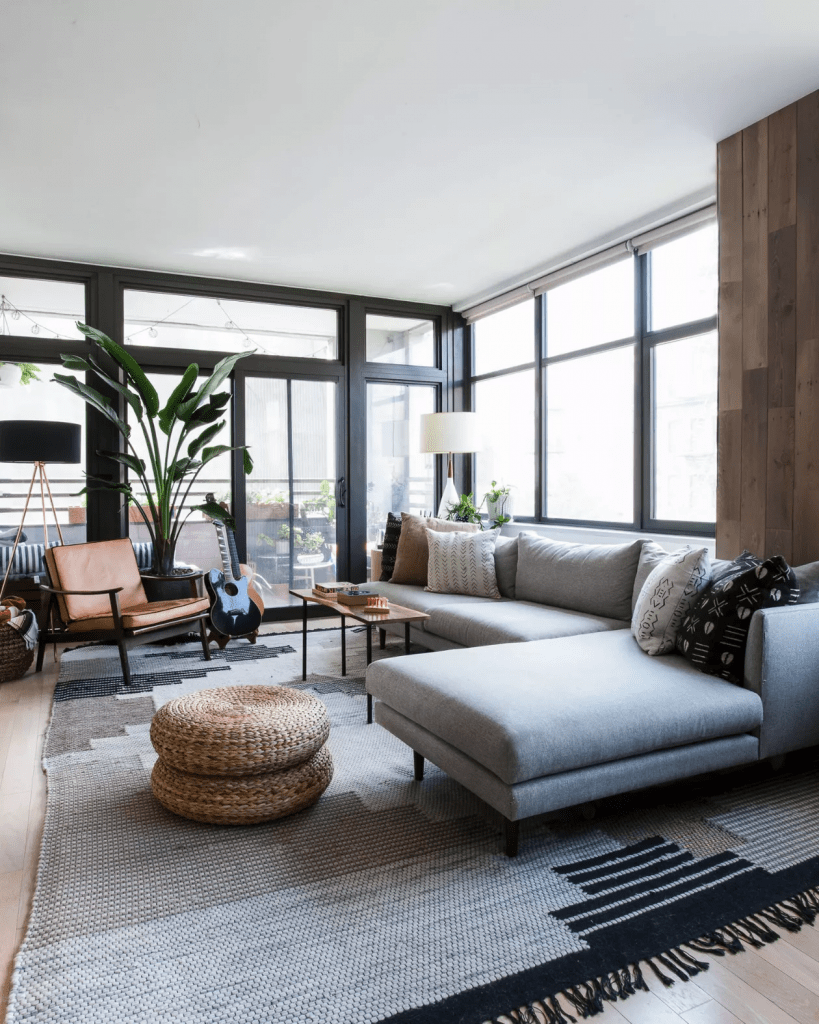
A sectional sofa offers versatility and ample seating space, making it a popular choice for many living rooms. When it comes to determining the best placement for a sectional, several factors come into play, including the size and shape of the room, the sectional’s configuration, and the desired functionality of the space. Consider the following guidelines to help you find the optimal placement for your sectional sofa.
Against a wall: Placing a sectional against a wall is a common and practical option, especially if you have limited space or a smaller living room. This arrangement maximizes floor space and allows for easy movement around the furniture. It also creates a cozy and intimate seating area, making it ideal for lounging or watching TV.
Dividing a room: A sectional can be used to divide a larger living room into distinct zones. If you have an open-concept space or a multifunctional room, positioning the sectional as a divider can create separate areas for lounging, dining, or entertainment. This arrangement provides visual separation while maintaining an open and inviting atmosphere.
Floating in the room: In spacious living rooms, a sectional can be placed away from the walls to create a more dramatic and luxurious look. This “floating” arrangement allows for a 360-degree view of the room and encourages social interaction from all angles. It works particularly well if your sectional has an attractive back or if there are other focal points in the room, such as a fireplace or a large window.
Corner placement: If your sectional has a corner configuration, consider placing it in a corner of the room. This maximizes seating space while also creating a cozy and inviting nook. This arrangement works well in both small and large living rooms and can be complemented with additional chairs or ottomans to create a well-rounded seating arrangement.
Adapting to room shape: Depending on the shape of your living room, you may need to adjust the placement of your sectional accordingly. For example, in a long and narrow room, placing the sectional perpendicular to the longest wall can help balance the proportions and make the room feel more spacious. In an L-shaped room, you can use the sectional to define one side of the L and create a cohesive seating area.
Ultimately, the best placement for a sectional sofa depends on the specific layout and characteristics of your living room, as well as your personal preferences. Experiment with different arrangements and consider the flow of the room, the functionality you desire, and the visual impact you want to achieve. By finding the optimal placement for your sectional, you can create a comfortable and inviting seating area that enhances the overall aesthetics and functionality of your living room.
In conclusion, finding the ideal placement for your sofa in your living room is essential for creating a space that is both functional and visually appealing. Throughout this guide, we have explored various factors to consider when determining where to place your sofa for the best functionality.
We discussed the concept of multi-functional spaces and how adapting to different needs can maximize the usability of your living room. Upholstery and fabric considerations were highlighted, emphasizing the importance of balancing practicality and style. The significance of conversation areas in promoting social interaction was also examined, as well as the benefits of maximizing natural light in the room.
Assessing the space and understanding the room’s layout is crucial in making informed decisions about sofa placement. We explored the role of focal points in creating visual impact and discussed the importance of traffic flow for ensuring easy movement within the room. Additionally, we touched on the concept of balance and symmetry in creating harmonious arrangements.
While the traditional notion of placing sofas against a wall has been widely followed, we also discussed how sofas don’t necessarily need to be against a wall and explored alternative options. We addressed common questions about sofa placement, such as positioning it in the middle of the room or in a living room with a window. We also discussed what to do if you cannot achieve the ideal sofa position, providing alternative solutions to make the most of your space.
Lastly, we delved into the best placement for a sectional sofa, considering different arrangements that maximize seating space and cater to the specific layout of your living room.
By considering these factors and exploring the options available, you can find the perfect placement for your sofa that suits your needs, enhances the functionality of your living room, and complements the overall design aesthetic.
Remember, there are no hard and fast rules when it comes to sofa placement. It ultimately depends on your personal preferences, the size and layout of your living room, and the specific requirements of your lifestyle. Experiment, be creative, and don’t be afraid to think outside the box. With careful consideration and attention to detail, you can create a living room that is not only visually stunning but also a comfortable and inviting space for relaxation and socializing.
So go ahead, take the knowledge and insights gained from this guide, and confidently position your sofa to transform your living room into a functional and stylish haven that reflects your unique personality and enhances your everyday living experience.
Most Popular Post:
10 Surprising Benefits of Printable Wall Art
15 Must-Have Accessories For Styling A Coffee Table
How to Choose the Perfect Interior Color Scheme for Your Home
Expert Guide On How To Buy A Rug For Each Room
FAQs (Frequently Asked Questions)
1. Where should I place my sofa for the best functionality in my living room?
The placement of your sofa depends on various factors such as the room’s layout, size, and desired functionality. Consider creating a conversation area by placing the sofa facing other seating options or around a focal point like a fireplace. Assess the traffic flow and ensure easy movement around the room. Experiment with different arrangements to find what works best for your space.
2. Can I place my sofa in the middle of the living room?
Placing a sofa in the middle of the living room can create a striking focal point and a more open feel. However, it depends on the size and layout of the room. In larger rooms, it can work well to divide the space or create multiple seating areas. In smaller rooms, it may not be practical as it can disrupt traffic flow. Consider the proportions and balance of the room when deciding to place your sofa in the middle.
3. What should I do if my living room has a window?
Having a window in your living room can provide natural light and a pleasant view. To make the most of it, consider positioning your sofa adjacent to or facing the window. This allows you to enjoy the view while creating a cozy seating area. You can also incorporate window treatments to control the amount of light and privacy.
4. Do sofas need to be against a wall?
No, sofas don’t necessarily need to be against a wall. Placing a sofa away from the wall can create a more dynamic and visually interesting arrangement, especially in larger living rooms. It can serve as a focal point and allow for better circulation around the furniture. However, placing a sofa against a wall can provide stability and define the boundaries of a seating area, making it suitable for smaller spaces.
5. What should I do if I cannot achieve the ideal sofa position?
If you cannot achieve the ideal sofa position due to room constraints or layout limitations, there are alternative options. Consider different furniture arrangements, create a focal point elsewhere in the room, optimize other design elements, or use room dividers or rugs to visually define separate zones. Adding decorative elements can also divert attention from any perceived drawbacks in the sofa placement.
6. What is the best placement for a sectional sofa?
The best placement for a sectional sofa depends on factors like room size and configuration. Placing a sectional against a wall is a common and practical option, especially in smaller spaces. Floating the sectional in the room or using it to divide a larger space can create a more dramatic look. Corner placement is suitable for maximizing seating space. Adapt the placement to the shape and features of your living room for the best results.
These FAQs address common concerns and provide guidance for optimal sofa placement. However, keep in mind that personal preferences and the unique characteristics of your living room play a significant role in determining the ideal position for your sofa.
CATCH THE LATEST IN HOME DECOR TRENDS:

Steal These 15 Expert-Approved Decorating Secrets

How To Accessories Your Living Room

Small Space? 10 Ways To Make A Room Appear Bigger

Make Your space Look Expensive
GET CAUGHT UP ON ALL THE INSPIRING DECOR TIPS:

18 Fresh Decorating Ideas To Update Your Fireplace

How To Create An Art Gallery Wall

